
Nov 11, 2022 | The Blog
Today, the southern Ukrainian city of Kherson was liberated by the armed forces of Ukraine. Kherson was the only administrative center seized by Russia in the February 24 invasion and hastily annexed to the Russian Federation through a fraudulent process. This short story is dedicated to all Ukrainian fighters.
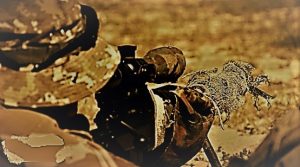 Hanna (callsign Vedma) is a 32-year-old sniper in the Ukrainian Army. Her unit is an assault infantry regiment currently deployed southwest of the town of Svatove, in the Luhansk Oblast of Ukraine. The Russian line is almost visible to the naked eye and the enemy is well dug in. Aerial reconnaissance shows the jagged shape of the Russian trenches forming the final defensive line before the outskirts of Svatove.
Hanna (callsign Vedma) is a 32-year-old sniper in the Ukrainian Army. Her unit is an assault infantry regiment currently deployed southwest of the town of Svatove, in the Luhansk Oblast of Ukraine. The Russian line is almost visible to the naked eye and the enemy is well dug in. Aerial reconnaissance shows the jagged shape of the Russian trenches forming the final defensive line before the outskirts of Svatove.
Despite their fortified position, the Russians are beginning to cave in all along the front in north-western Luhansk, under the impact of a well-timed Ukrainian offensive that swept eastward through the key towns of Izyum and Lyman in the neighboring Kharkiv Oblast. Intercepted radio traffic reveals that some enemy units are hastily retreating in the middle of the night, while others are left to their own devices after their officers just piled into staff cars and fled the frontline.
In the moonless night, Hanna has crawled to a well-concealed position slightly higher than the enemy trenches and is slowly getting ready for business. She wears several layers of technical clothing against the October chill and carries a thermos flask of hot tea. She’ll watch over the enemy line until the early morning and retire to her unit’s HQ before dawn. A blacked-out Toyota pickup will rendezvous with her on the far side of the woods she silently crossed to get here and deliver her and two more fellow snipers back to their lodgings.
Her sniper’s rifle is a Ukrainian-made Zbroyar Z-10, a brand-new weapon that fires the standard 7.52 NATO cartridge. Lying under a light camouflage net, both the weapon and the sniper are completely invisible to the enemy.
Vedma (which is Ukrainian for witch) methodically scans the Russian line, the Z-10’s butt nestled in her shoulder and the suppressed barrel resting on its bipod. The thermal imaging sight set atop the barrel shows her a blurred black band of frosty no-man’s land leading to the uneven outline of the trenches some 300 meters away. Beyond that she sees the fuzzy backdrop of a gray treeline and a slightly paler sky above.
After over an hour of uneventful scanning, two white blobs suddenly show in her sights, betraying the presence of at least two living bodies. Hanna calmly registers their sudden appearance and tries to make sense of their movements. They seem to be hunched over something or someone which they struggle to tug away from their dugout. The object of their exertions, however, does not return the heat signature that a wounded comrade would. Is that a dead body they’re dragging or maybe an ammo crate? Hanna invests a split second to process this as her index finger tightens on the trigger, the crosshairs steady on the left Russian’s center mass.
No matter what (or whom) they’re dragging—she concludes—they are all legit targets.
Three rapid shots ring out and shatter the silence of the night.
Now the thermal sights no longer return a target. The white blobs have dropped behind the raised far edges of the trench and can no longer be seen.
Hanna expertly gathers all her gear and scuttles to another position, but the rest of her shift will be uneventful. During her bumpy ride back to HQ she still puzzles over her earlier action but finds no answer.
The next morning, a reconnaissance drone solves the riddle. Following Vedma’s directions, the drone operator slowly flies the bird over the section of the Russian trenches the sniper was observing during the night and now hovers vertically above a bizarre sight.
Two dead Russian soldiers are sprawled on the ground and between them lies a dazzling white box, the washing machine they had looted in Svatove, its glass door facing the sky like a monocled eye—with a neat bullet hole almost dead center.
The drone operator, a skinny 20-year-old with a fuzzy reddish beard, looks at Hanna in awe and mumbles: “No more heavy-duty cycles for these two mobiks*.”
(*) “Mobik” is Ukrainian slang for any Russian mobilized soldier.
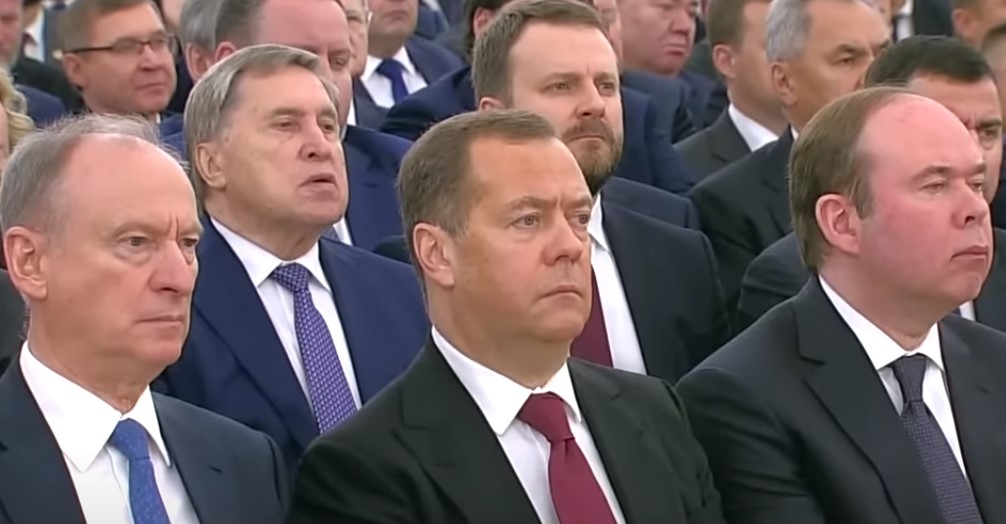
Nov 5, 2022 | The Blog
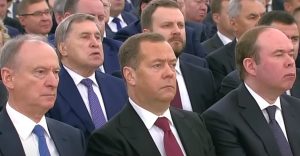 About 90 years ago, a German theologian by the name of Dietrich Bonhoeffer took a firm stand against the Nazi party and that section of Germany’s religious establishment (the so-called German Christians) who supported the ideology of National Socialism.
About 90 years ago, a German theologian by the name of Dietrich Bonhoeffer took a firm stand against the Nazi party and that section of Germany’s religious establishment (the so-called German Christians) who supported the ideology of National Socialism.
Boenhoffer had warned against the danger of the leader (Führer in German) gradually becoming the Verführer (which in English can translate as seducer as well as misleader.)
His firm convictions and unequivocal opposition to the Austrian-born dictator saw Boenhoffer join the ranks of a secretive cabal that ultimately plotted the assassination attempts on the Führer. Imprisoned in the Flossenbürg concentration camp, Boenhoffer was promptly found guilty by a kangaroo court and hanged on April 9, 1945. Three weeks later, the Misleader-in-Chief committed suicide in his bunker, thus ending the war in Europe.
This sinister, disastrous drift from head of state to seducer/misleader of his people has also affected Vladimir Putin, and—by consequence—Russia as a whole.
In order to justify his second invasion of Ukraine in February 2022, Putin convinced a gullible, propaganda-addled populace that this so-called “special military operation” was aimed at the “denazification and demilitarization” of the neighboring sovereign country.
But the Russian dictator himself had been misled by his generals and surrogates, and while he was busy looking for the right suit to wear at the victory parade in Kyiv the following week, his army was bogged down and unable to seize its ultimate goal.
Fast-forward seven months or so. With the Russian military operations dragging on and the losses in blood and treasure piling up, Putin finally pulled the trigger on a nationwide “partial mobilization”. Not even a consummate deceiver as Vladimir Vladimirovich could soft-sell this to his fawning population. This was a bridge too far and the “denazification” battle cry had run out of steam.
So the regime—through its propagandists, spokespersons and the Man himself—decided to shift their nonsensical rhetoric into overdrive.
During a rambling speech in late September*, Putin told the world that the war was really a crusade against Western values and debauchery, with emphatic verbal attacks on junkies and homosexuals, Anglo-Saxon dogs of war and, unsurprisingly, satanist cults. It was a bizarre speech and, when the camera panned over the Kremlin audience, most faces were stony and unresponsive (see photo).
Later, encouraged by his boss’s recent rants, Russian ambassador to the UN Vasiliy Nebenzya denounced the West’s attempts to: (a) develop pathogens engineered to attack Slavic people, (b) infect migratory birds for spreading diseases within the Russian Federation, and (c) breed Covid-positive bats and disease-ridden mosquitoes to be secretly let loose on Russia. As for Ukraine, the ambassador accused it of working on a “dirty bomb” to be detonated as part of a false-flag operation. If all this does not earn Nebenzya the moniker “Dementia” nothing will.
Motivational speeches to Russian frontline troops have been promptly updated to contain the above verbiage. Chechen fraudster and Tik-Tok warrior Ramzan Kadyrov has already promised that his crowd will launch a jihad against all above enemies.
Russian political analyst and vlogger Maksim Katz ** was horrified at how low the official rhetoric had sunk “[This is] basically Al-Qaeda. A large, Northern Al-Qaeda spanning 11 time zones. How can they insult Russia like this?”
* The September 30, 2022 speech announced the sham annexation of Ukraine’s Luhansk, Donetsk, Kherson and Zaporizhzhia regions while the Ukrainian army was actively liberating them.
** On October 29, 2022 Maksim Katz was placed on the federal wanted list by the Russian Ministry of Internal Affairs.
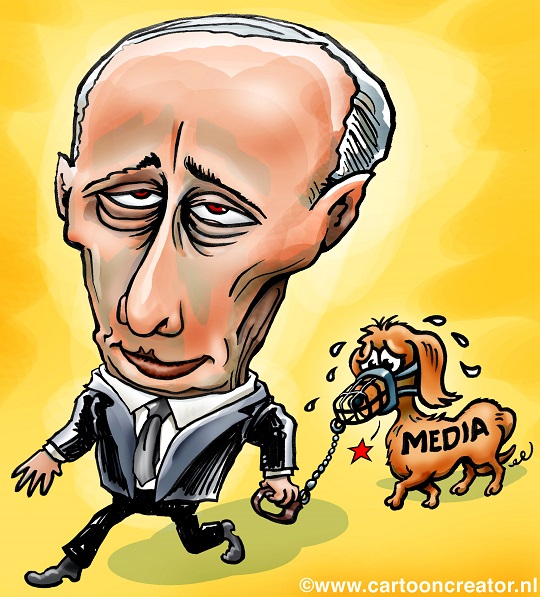
Ott 10, 2022 | The Blog
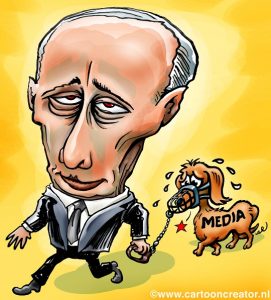
cartooncreator.nl
Mentre il conflitto in Ucraina vede la difesa russa sgretolarsi in più settori, da noi proseguono gli ululati dei sostenitori di una pace a tutti i costi. L’italiano medio è un emerito imbecille e perde il controllo delle proprie emozioni quando venga pronunciata la parola pace.
Ottenere la pace in un’Ucraina ancora occupata per il 15% dai russi può solo avvenire in due modi: vittoria sul campo delle truppe di Kyiv (con espulsione dei russi dal territorio ucraino) o un accordo che preveda la cessione alla Russia di parti del Paese invaso. Al momento, Kyiv non ha il minimo interesse a trattare visto che sta progressivamente eliminando gli invasori. Non ha nemmeno interesse a un cessate il fuoco temporaneo perché non farebbe altro che avvantaggiare il nemico.
Putin, invece, cerca di seminare incertezza nel campo avversario perché ottenere una pausa sul campo gli consentirebbe di riorganizzarsi e riprendere l’iniziativa.
Ma all’italiano medio non importano le conseguenze di un armistizio. Gli basta riempirsi la bocca della parola pace. A dire la verità, l’imbecille nostrano ti può elencare i vincitori delle ultime dieci edizioni del festival di Sanremo ma non ha idea di dove sia Kherson, chi sia Lukashenko, o quale sia l’attuale status della Crimea.
Sa solo che i combattenti ucraini del Battaglione Azov sono dei fascisti perché glielo ha detto la propaganda del nanetto nazista Putin.
A lui/lei basta appendere al balcone la bandiera arcobaleno con la scritta PACE, che gli è servita pure durante le fasi più drammatiche della pandemia, tanto al massimo non serve a niente.
Entra in scena Pietro Fassino (che nonostante le apparenze è ancora vivo) il quale declina all’Adnkronos il seguente obiettivo: «ottenere almeno un cessate il fuoco, patrocinato dall’Onu, consentirebbe nell’immediato di far tacere le armi e evitare ulteriori tragedie e sofferenze.»
Fassino è il presidente della Commissione Esteri della Camera e uno dei maggiori esponenti del PD. Ma se analizziamo le sue affermazioni, la Signora Lina (che fa la bidella alla scuola elementare all’angolo) avrebbe potuto esternarle con altrettanta competenza e lungimiranza.
Cui prodest? A chi serve oggi un cessate il fuoco?
Putin ha lanciato una caotica campagna di mobilizzazione “parziale” che si è arenata grazie alla proverbiale incompetenza e corruzione dell’apparato militare russo. Decine di migliaia di uomini sono stati rastrellati in tutta la Federazione Russa e scaraventati in direzione del fronte. Questi disgraziati non hanno ricevuto neppure un minimo addestramento, non hanno scarpe adatte, non hanno vettovaglie e vivono all’addiaccio o in sistemazioni di fortuna in attesa di essere mandati al macello.
Risultavano al computer dell’esercito russo 1,5 milioni di uniformi invernali, ma sono sparite. Come da lunga tradizione, il pagamento è stato fatto ma le uniformi non ci sono. Quali generali si sono spartiti il bottino (bonificando a Putin la sua giusta commissione) e hanno fatto sparire le prove?
Uno dei mezzibusti invitati a parlare in uno dei “talk show” della TV di stato russa, sosteneva giorni fa che l’esercito di Mosca avrebbe bisogno di un paio di mesi per potersi riorganizzare e riprendere a combattere in maniera più efficace. Ma come fare? Le truppe di Zelensky incalzano l’invasore e lo spingono a una rotta incontrollata nella regione di Kherson e nel Luhansk. Più accelera la controffensiva ucraina e più la resistenza russa si sgretola. Kyiv non cerca una tregua, vuole liberare il suo Paese.
Ed ecco che in più nazioni europee (e non) spuntano i Fassino a perorare la causa del cessate il fuoco, nascondendosi dietro al dito di “evitare ulteriori tragedie.”
Imbecilli o complici?
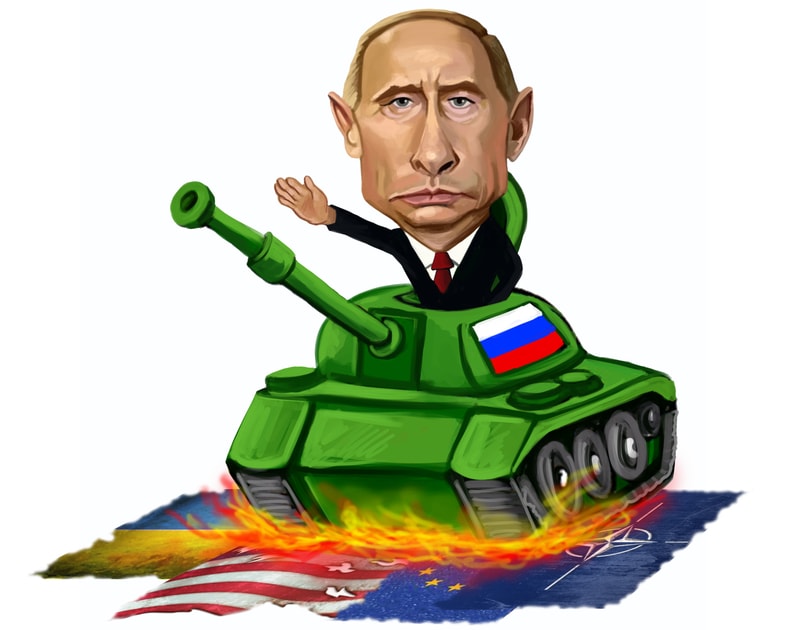
Set 30, 2022 | The Blog
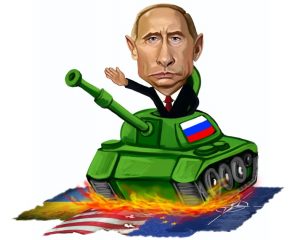
courtesy of Caricaturemaster.com
The month of September comes to a close but not without another heinous Russian war crime: a humanitarian aid convoy in the Zaporizhzhya region of Ukraine was attacked by Russian missile artillery and devastated, with the loss of at least 25 civilians.
But Russia doesn’t even care about its own losses, which are expected to go sky high after the recent mobilization, which basically amounts to railroading random civilians and dumping them on the frontlines.
The sham referendums in the occupied regions have been wrapped up. For those who thought the whole effort was a tragic farce, now there’s even video evidence to that effect. But Russia doesn’t care if the rest of the world shakes its head at Putin’s in-your-face hypocrisy. In his calculus, the bogus referendums were needed to justify the annexation of those regions. Once annexed, they’re Russia, and any Ukrainian attack is to be regarded as a violation of Russia’s borders. Hence, it’s time for Moscow to once again rattle its shopworn saber and break out the nukes (if some corrupt big-hat military honcho hasn’t already sold them for personal profit.)
The coming fall and winter will show whether the rest of the world will find the strength to call Putin’s bluff.
On a positive note, the Russian tyrant’s talk-show 3-S sycophants (Solovyev, Skabeeva, Simonyan) sound pretty downbeat these days.
I remember that just a few weeks ago they were even advocating nuclear strikes on London, while now that they witness the destruction of the Russian military and the rising popular rejection of the “partial” mobilization, they appear resigned and uncharacteristically deflated—which for monumental gasbags is no mean feat.
Ukraina Peremozhe. Ukraine will prevail.
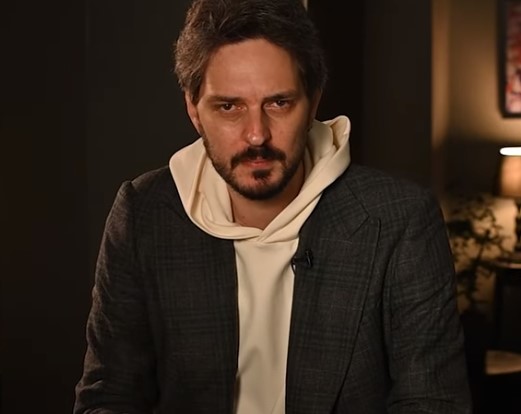
Set 12, 2022 | The Blog
In the space of a few days, the mood in Russia has changed.
Ukraine has made a superbly effective surprise move and caught the Russians totally unprepared.
While conducting a deliberate counteroffensive in the south, in the Kherson Oblast, Kyiv’s forces have suddenly overrun the front in the north-east of the country, where the Russians had been lulled into a state of complacency. The Ukrainian military’s overall strategy is nothing but textbook “Blitzkrieg.”
Thousands of Russian soldiers have been killed, thousands more have surrendered, and the amount of weaponry the Ukrainians have captured is staggering. Precious stores of arms and ammunition are now being put to good use by the Ukrainians. This—and the western supplies of military vehicles, guns and ammunition still flowing in—is effectively feeding the Ukrainian war machine on its way to driving back the Russians all the way to the Federation’s western borders.
What next?
With the Kharkiv Oblast and the Donbass free of invaders, Ukraine will be able to devote its full attention to Crimea.
A quick dash from the Donbass towards the south-west coupled with pressure from the Kherson area can compromise the survival of a large Russian force occupying the Kherson Oblast and the Azov Sea coast. If they haven’t fled already, they’ll retreat into Russia in the direction of Rostov—or try their luck fleeing into Crimea.
The Crimean Peninsula, once Kherson is liberated, will turn into a gigantic mousetrap. The Ukrainians have the resources to seal it shut by blowing up the Kerch bridge (the only remaining way out to Russia) and then pick off the Russians like fish in a barrel. There’ll be thousands of “Z” zombies waving white flags in surrender and many more pushing up the sunflowers next year.
This never-in-a-million-years scenario has now become utterly possible. Russian propagandists, true scum of the earth, have suddenly changed their tone. Only the chronic imbeciles, like Putin’s aide Medvedev and foreign minister Lavrov, still utter loud threats that no-one believes anymore.
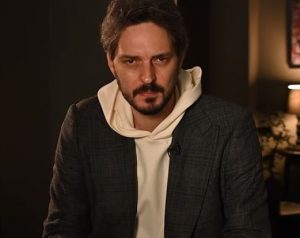 The TV-show pundits have sensed that a pivotal moment has been reached and are no longer touting imaginary victories on the battlefield. They’re beginning to take more conciliatory positions, while still careful not to slip into defeatism and, inevitably, a holding cell.
The TV-show pundits have sensed that a pivotal moment has been reached and are no longer touting imaginary victories on the battlefield. They’re beginning to take more conciliatory positions, while still careful not to slip into defeatism and, inevitably, a holding cell.
A powerful voice of dissent who doesn’t pull any punches is Russian political blogger Maxim Katz (photo). His You Tube channel has 1.4-million subscribers and today features a 17-minute video that sums up the current state of affairs as no-one else has done. The English subtitles are excellent, and I recommend this modest investment of your own time.
We live in a historic moment, after all.
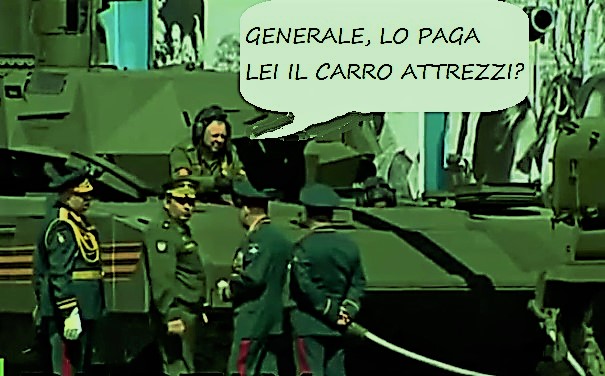
Set 1, 2022 | The Blog
 Dal 2015, la cittadina russa di Kubinka, presso Mosca, ospita un evento dedicato al settore degli armamenti chiamato Army.
Dal 2015, la cittadina russa di Kubinka, presso Mosca, ospita un evento dedicato al settore degli armamenti chiamato Army.
Non è un omaggio alla lingua inglese ma la trascrizione della parola russa che, come in inglese, significa Esercito.
Quest’anno, l’appuntamento è caduto a metà Agosto e ha visto la partecipazione di numerose delegazioni estere, principalmente da nazioni terzomondiste clienti storici di Mosca.
E’ sempre difficile valutare il successo commerciale di fiere di questo tipo, visto che i contratti per le forniture militari si perfezionano in tempi molto lunghi e richiedono spesso interventi della diplomazia a supporto dei produttori di mezzi militari e affini.
Il settore gioca un ruolo molto importante per la Russia, che è il secondo esportatore mondiale di armi dopo gli Stati Uniti, ma nel 2022 le prospettive sono improvvisamente diventate pessime.
Domanda facile facile: Che cosa è avvenuto di diverso quest’anno a guastare la festa di Mosca?
E già, c’è stata l’invasione dell’Ucraina.
Dopo 6 mesi di guerra i russi sono in grosse difficoltà, le armi russe si stanno rivelando inadeguate e il problema è sotto gli occhi di tutti. I potenziali acquirenti di armamenti russi hanno potuto constatare l’inaspettata vulnerabilità dei mezzi corazzati russi e al tempo stesso la micidiale efficacia di quei sistemi d’arma prodotti da USA, Gran Bretagna, Francia, Germania e Svezia, che hanno devastato l’esercito russo.
Difficile dimenticare le immagini diventate quasi giornaliere di tank russi che esplodono proiettando in aria la torretta a decine di metri di altezza e uccidendo all’istante l’equipaggio. “Questo nel video demo non l’avevate mostrato”, potrebbe obiettare il dignitario in visita dal subcontinente indiano. Nemmeno la promessa di una valigia piena di dollari servirà a rassicurarlo sulla qualità del mezzi corazzati russi.
E poi, che fine hanno fatto i tanto decantati carri T-14 Armata, i primi ad essere progettati dopo il crollo dell’URSS? L’esercito russo ne aveva ordinato un primo lotto di 2.300 dopo il debutto pubblico nel 2015. Dovevano essere consegnati due anni fa, ma ne sono in circolazione solo una ventina. Quest’anno un T-14 si è guastato durante le prove della parata militare della vittoria (la vittoria del 1945, beninteso) e ha costretto gli organizzatori a inventarsi una grottesca bufala di stile USSR: “Era tutto studiato. Volevamo dimostrare come si recupera un carro immobilizzato.” Balle da scolaretti di terza elementare.
E’ anzi molto probabile che il T-14 resti un progetto incompiuto. La ditta che lo produce è il difficoltà economiche, le sanzioni hanno bloccato la disponibilità di componenti chiave e probabilmente nessuno lo vuole dopo le pessime prestazioni dei T-72 e T-80 in Ucraina.
Lo stesso dicasi per l’aviazione russa e i suoi cavalli di battaglia. Il tanto decantato caccia della Quinta Generazione, il Sukhoi SU-57, già faceva fatica ad essere prodotto per l’aviazione russa prima delle ultime sanzioni. E comunque, nessun compratore estero si è ancora fatto avanti. Il prevedibile collasso economico di Mosca non è certamente un fattore rassicurante per i potenziali acquirenti.
Eppure, come un disco rotto, Putin continua a sostenere la “superiorità degli armamenti russi”, ma è la classica panzana alla Saddam Hussein destinata al pubblico russo che è notoriamente onnivoro. Grazie a una schiera di propagandisti senza vergogna, queste idiozie influenzano la gente comune che le ripete alla lettera. Il piatto delle esportazioni di armamenti (che nel 2018 valeva oltre 20 miliardi di dollari) è in caduta libera e rischia di arrivare a zero. Anche l’India, maggior compratore di armi russe, guarda la televisione e si interroga sulle sue future scelte. Se Putin avesse il tempo di documentarsi, dovrebbe leggere la “legge delle conseguenze impreviste”, un brillante concetto sviluppato dal sociologo Robert K. Merton nel 1936. (Merton si chiamava in realtà Meyer Robert Schkolnick ed era nato in USA da genitori russi. Com’è piccolo il mondo…)
A Putin rimane sempre l’esportazione dei fucili d’assalto Kalashnikov ai paesi che non applicano sanzioni alla Russia. Sono oggetti di basso valore unitario ma sempre affidabili: non c’è nazione del terzo mondo o gruppo terroristico che ne possa fare a meno. A tutt’oggi l’industria russa è ancora in grado di stampare lamiera e materiali termoplastici. Ma non è detto per quanto, visto che la produzione di automobili è crollata dell’80% e la Kontsern Kalashnikov è in serie difficoltà economiche.

 Hanna (callsign Vedma) is a 32-year-old sniper in the Ukrainian Army. Her unit is an assault infantry regiment currently deployed southwest of the town of Svatove, in the Luhansk Oblast of Ukraine. The Russian line is almost visible to the naked eye and the enemy is well dug in. Aerial reconnaissance shows the jagged shape of the Russian trenches forming the final defensive line before the outskirts of Svatove.
Hanna (callsign Vedma) is a 32-year-old sniper in the Ukrainian Army. Her unit is an assault infantry regiment currently deployed southwest of the town of Svatove, in the Luhansk Oblast of Ukraine. The Russian line is almost visible to the naked eye and the enemy is well dug in. Aerial reconnaissance shows the jagged shape of the Russian trenches forming the final defensive line before the outskirts of Svatove.









